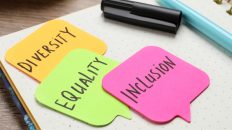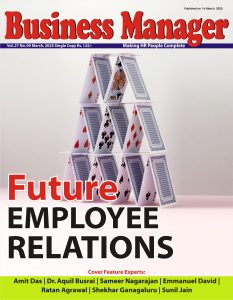Diversity, Equality, and Inclusion (DEI) are the cornerstones of a thriving modern business. A diversified, inclusive workplace that provides equal opportunity to all is bound to cultivate an innovative and supportive culture, which will go a long way to make that organization successful. It sounds like a simple enough formula; make your organization a DEI workplace, and your challenges will melt, and your opportunities will grow. But why don’t all organizations make their companies a DEI workplace?Because it is easier said than done.
Pandemic changed the way we think and function in almost all spheres of life. Businesses have gone through tremendous stress in maintaining the pre-pandemic status quo. With pandemic-induced remote working becoming the new way of working, it opened new opportunities for organizations that hitherto were not possible from the DEI perspective.Remote work has helped many organizations to take advantage of their diversified talents. Post pandemic, organizations can now tap into the talent pool of people who otherwise might have travel constrain or people who would have hesitated to work in the backdrop of societal taboos, given their personal and life choices, etc.
In a way, the pandemic has opened new doors for both organizations and individuals and have contributed to the overall cause of achieving DEI goals.Whether it is pandemic or not, change in the landscape of working or not, DEI at the workplace will not happen by just having the earnest intent or a well-written mission statement—it requires a conscious choice.
Also Read: Women leading the edtech brigade in India
An organization’s leadership must have the will and commitment to make their workplace a DEI workplace and, most importantly, a concrete plan of action.For an organization to become a DEI workplace, a solid strategy is a good starting point. However, how well the organization communicates the strategy and the leadership’s sense of commitment to the junior-most members of the organization will determine the outcome.
As a first step, an organization should start by forming small working committees with members drawn from different functions and layers of leadership depending on the organization’s size. The organization must inform the working committees about its determination around DEI, share the strategic plans and goals with them, debate considerations, solicit inputs, and formally finalize the execution plan.It is important to entrust the DEI plan’s successful execution to the organization with large and not a select small group.
This makes the entire organization buy into the organization’s DEI philosophy. It will also make everybody responsible for shifting an organization to a DEI workplace. Any strategic plan—including the achievement of business goals—becomes sustainable only when people get involved from across the organization and its layers. A DEI plan is no exception.When an organization involves everybody to make it a DEI workplace, it can be a tremendous boost to internal branding.
Whether it is pandemic or not, change in the landscape of working or not, DEI at the workplace will not happen by just having the earnest intent or a well-written mission statement—it requires a conscious choice.
The following are several critical aspects to incorporate into the DEI plan:
Establishmetrics: Determine the metrics you plan to follow and keep track of the progress; this is essential. Publish metrics across the organization for full visibility and transparency.
Revisit policies and procedures:Ensure that all org-level policies are revisited;that they appropriately represent the DEI goals; and that processes are in place to facilitate them.
Internal workshops calendar: Publish a calendar of internal workshops to ensure the progress of DEI goals and to sort out any implementation challenges. One key aspect of making any program successful is sustaining it, and internal workshops run by working committees at a set frequency help ensure sustainability.
Orient and train hiring teams and hiring managers:Orient all people involved in the hiring process and hiring decisions about DEI goals. Train the team to overcome unconscious decision-making biases. This is an often ignored but important aspect.
Internal and external branding:Branding is an important aspect of the DEI execution plan as committing openly and publicly puts a lot more responsibility on the organization and motivates teams to chase the DEI goals. Creating the offline and online material and updating the website, career pages, and social media pages of the organization with DEI goals will help attract the talent needed to reach DEI goals.
Reach out beyond the traditional channels to source talent:Any organization needs to balance business and DEI goals. Explore beyond the conventional channels to ensure that the right talent is tapped and there is a continuous flow of applicants.Organizations can spur various initiatives to reinforce their commitment to DEI. For example, engage with various communities and get involved at the early stages of talent development or encourage employees to work with communities to develop connections and outreach.
Beyond onboarding: Ask probing questions and look at the team’s composition at the function or delivery unit and organization levels. Watch how promotions are handled, ensure all employee groups are represented fairly at the department level in promotions, recognition, and growth opportunities.
Focus on retention: While most organizations focus on DEI while hiring, organizations tend to miss retention. Retentions efforts should include a frame work that keeps DEI goals in mind. As DEI becomes woven into the fabric of retention, the organization will likely see a reduction in stress related to hiring.
Leverage technology: Use data analytics to understand the patterns that emerge from the various efforts and tweak efforts and methods accordingly. Run dip check surveys across the organization at a set frequency to ensure that organization is aligned with the DEI goals.
























Add comment